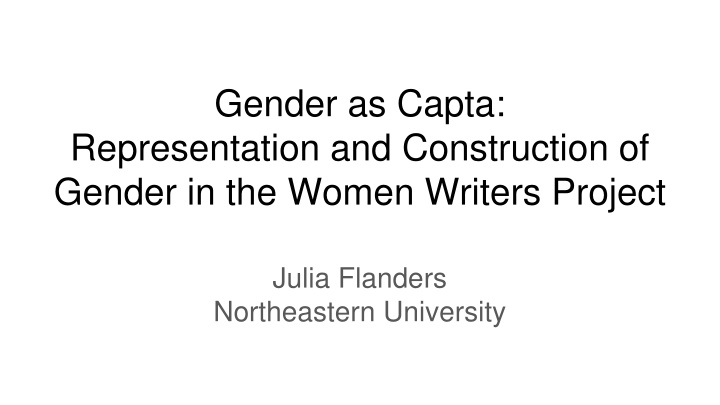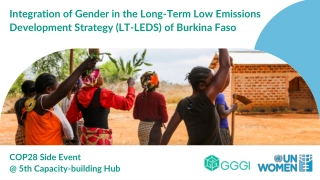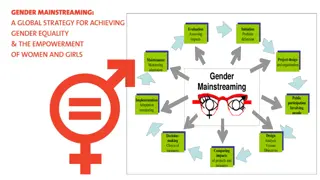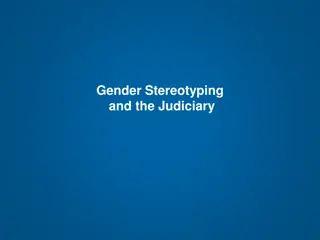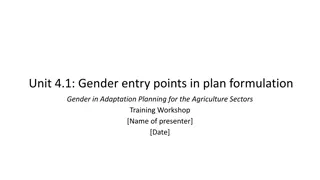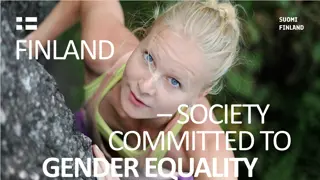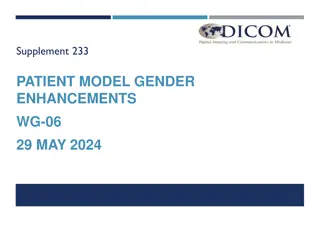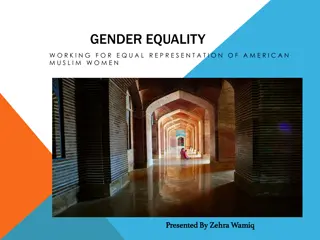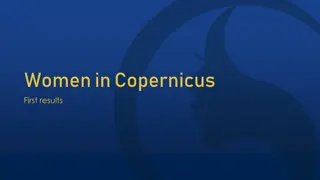Gender Representation in Women Writers Project
This content discusses the representation and construction of gender in the Women Writers Project, exploring how gender, race, and ethnicity intersect in categorizing individuals. It delves into the works by Julia Flanders at Northeastern University, addressing the placement of women and men based on different characteristics and showcasing narratives like "The Wonderful Discoverie of the Witchcrafts of Margaret and Phillip Flower, 1619".
Download Presentation

Please find below an Image/Link to download the presentation.
The content on the website is provided AS IS for your information and personal use only. It may not be sold, licensed, or shared on other websites without obtaining consent from the author.If you encounter any issues during the download, it is possible that the publisher has removed the file from their server.
You are allowed to download the files provided on this website for personal or commercial use, subject to the condition that they are used lawfully. All files are the property of their respective owners.
The content on the website is provided AS IS for your information and personal use only. It may not be sold, licensed, or shared on other websites without obtaining consent from the author.
E N D
Presentation Transcript
Gender as Capta: Representation and Construction of Gender in the Women Writers Project Julia Flanders Northeastern University
If gender is first and then racial or ethnic background, all of the women are together and all of the men are together, but Afro-Americans, Euro-Americans, Asian-Americans and Hispanic-Americans are each in two different places. However, if racial or ethnic background is the first characteristic in sorting then Afro-, Euro-, Asian-, and Hispanic-Americans are each together, but women are in four different places and men are in four different places. Hope Olson, How We Construct Subjects
The Wonderful Discoverie of the Witchcrafts of Margaret and Phillip Flower, 1619 From the <titleStmt>: <author> <persName ref="p:unknown.pbp" type="person-female"> [unknown]</persName> </author> From the personography entry for Margaret Flower: <person xml:id="mflower.wxz"> <persName> <surname>Flower</surname> <forename type="first">Margaret</forename> </persName> <sex>female</sex> <death when="1619-03-11"> <placeName>Lincoln, England</placeName> </death> <residence> <country>England</country> </residence> </person> From the <sourceDesc>: <respStmt> <persName ref="p:mflower.wxz">Flower, Margaret</persName> <resp type="author">Margaret Flower is the subject of this narrative but not, strictly speaking, its author.</resp> </respStmt> <respStmt> <persName ref="p:pflower.due">Flower, Phillipa</persName> <resp type="author">Phillipa Flower is the subject of this narrative but not, strictly speaking, its author.</resp> </respStmt>
<author> <persName type="regularized" ref="p:pcorneill.tbp">Pierre Corneille</persName> <persName type="titlePage" ref="p:pcorneill.tbp">Monsieur Corneille</persName> </author> <title>Horace</title> <respStmt> <persName type="regularized" ref="p:jdenham.ing">Denham, John</persName> <persName type="titlePage" ref="p:jdenham.ing">Sir John Denham</persName> <resp type="translator">translator of the final materials printed in this edition</resp> </respStmt> <respStmt> <persName type="regularized" ref="p:kphilips.bku">Philips, Katherine (Fowler)</persName> <persName type="titlePage" ref="p:kphilips.bku">Mrs Katherine Philips</persName> <resp type="translator">translator of the initial materials printed in this edition</resp> </respStmt>
<person n="9029" xml:id="mprince.tzq" role="p.textbase_author c.history g.north_america"> <persName> <surname>Prince</surname> <forename type="first">Mary</forename> </persName> <sex>female</sex> <birth when="1788"> <placeName>Bermuda</placeName> </birth> <idno type="LCNA">n86058712</idno> <death notBefore="1834"/> <residence> <country>England</country> </residence> <residence> <placeName type="UNKNOWN">Bermuda</placeName> </residence> <note >British abolitionist and autobiographer, author of _The History of Mary Prince_.</note> </person>
Counting and classification can be powerful parts of the process of creating knowledge. But they re also tools of power in themselves. An intersectional feminist approach to counting insists that we examine and rethink the assumptions and beliefs behind our classification infrastructure. D Ignazio and Klein, Data Feminism, 122-123
The creation of the [Colored Conventions] corpus enables these important activists to be counted, as well as have their words analyzed and incorporated into the historical record. But the process of converting the meeting minutes into data strongly recalls the original violence that accompanied the slave trade, when human lives were reduced to numbers and names. D Ignazio and Klein, Data Feminism, 118
I was born in Newburyport, in 1799. My mother was the daughter of Tobias Wornton, who was stolen from Africa, when a lad, and was a slave of Capt. Winthrop Sargent; and, although a slave, he fought for liberty, and was in the Revolutionary army at the battle of Bunker Hill. My grandmother was an Indian. My father, Thomas Gardener, was born on Nantucket; his parents were of African descent, and when he died of bleeding at the lungs, leaving my mother a widow the second time, with an infant in her arms. Nancy Prince, A Narrative of the Life and Travels of Mrs. Nancy Prince, 1850 The idea of writing Mary Prince s history was first suggested by herself. She wished it to be done, she said, that good people in England might hear from a slave what a slave had felt and suffered; and a letter of her late master s, which will be found in the Supplement, induced me to accede to her wish without farther delay. The more immediate object of the publication will afterwards appear. Mary Prince, The History of Mary Prince, 1831 From the dull confines of a country shade, A rustic damsel issues forth her lays; There she, in secret, sought the Muse s aid, But now, aspiring, hopes to gain the bays. Janet Little, The Poetical Works of Janet Little, The Scotch Milkmaid, 1792
Data are capta, taken not given, constructed as an interpretation of the phenomenal world, not inherent in it. Johanna Drucker, Humanities Approaches to Graphical Display , 8
